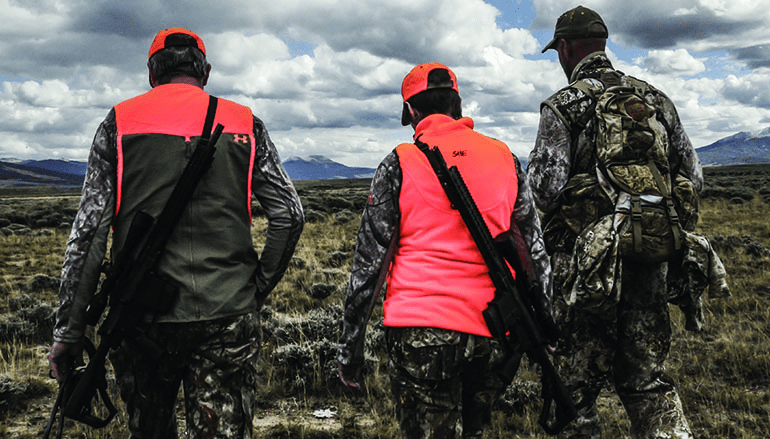
Stay Safe This Deer Season
Opening day means keeping safety in your sights.
The Texas Parks and Wildlife Department (TPWD) reminds Texas hunters getting ready for opening day of deer season Saturday to keep safety in the crosshairs. “Texas had an all-time low number of incidents last deer season and we want that trend to continue,” says Steve Hall, Texas Parks and Wildlife Department’s hunter education coordinator. “And the number one safety measure a deer hunter can take is to complete a hunter education training course.”
If you were born on or after Sept. 2, 1971 and this will be your first deer season, remember you must show proof of hunter education in the field. If you’re under 17, you can hunt without proof if you’re accompanied by a licensed hunter 17 years of older who’s either certified or exempt (born before Sept. 2, 1971). If you’re 17 and over and have not completed the course, you can obtain a one-time deferral at a hunting license dealer if you aren’t able to get into a course or take an online-only course in time. Information about hunter education is available online or by calling 512-389-4999.
Check your equipment
“In addition to completing hunter education, now is also a good time to make sure all your equipment is up to speed, from your stands to your firearms,” Hall says. He recommends cleaning your rifle, checking for any mechanical problems and sighting it in before you head afield. Being sure all equipment is in good shape is necessary to safety afield.
“Beyond that, now is a good time to go over the basic rules of gun safety, even if you’ve heard them a jillion times before,” says Hall. “Last year we continued to see an uptick in the average age of those involved in hunting incidents and that tells me that the need for a safety primer is for anyone at any age.”
Gun safety Big 4
The big four for gun safety: always point your firearm in a safe direction; always treat it like it’s loaded; always make sure of your target before you shoot (use binoculars, not your rifle scope); and keep your finger off the trigger until you’re ready to pull it. You can’t call a bullet back and it always has the right-of-way. In 2015, two people died in Texas hunting-related incidents. Both involved gunshots—one self-inflicted, one by another hunter. TPWD’s annual Hunting Accident Report for 2015 identifies the factors involved in reported hunting accidents last year.
The No. 1 cause involved hunters swinging on game outside a safe zone of fire. One way to stay out of some other hunter’s sights is wearing blaze orange clothing or hat. “Blaze orange is not mandatory in Texas unless you’re hunting on public land, but it makes a lot of sense,” Hall says. “Deer cannot see color, but other hunters can.”
Elevated stand safety
While firearms safety should be a hunter’s top priority, accidents in the field occur without a shot being fired. “The most unreported of all hunting accidents are falls from elevated hunting blinds or treestands,” Hall says. “If you’re going to be hunting from a treestand, make sure to use a Treestand Manufacturer’s Association-approved tree stand and a TMA approved fall restraint device.” While treestands see a fair amount of use in East Texas, many more hunters used elevated blinds or tripods accessible by ladder.
“Most treestand incidents occur while climbing into or out of the stand,” he says. “That means that a hunter should be tied in from the ground, back to the ground using an approved climbing system and maintain three points of contact while climbing — either two hands and one foot on the ladder at all times, or two feet and one hand.” Don’t try to carry your rifle when you get into or out of an elevated stand. Make sure it’s unloaded until you’re safely seated. “Use a haul line to bring your unloaded rifle up once you are safely in your blind, then, with your firearm unloaded, lower it with the haul line before climbing down,” Hall recommends. Another thing to remember about deer stands, especially permanent blinds is that they make good habitat for smaller animals.
“Always check your blind for stinging insects, snakes and other critters that might have been living in it during the off-season,” Hall suggests.



